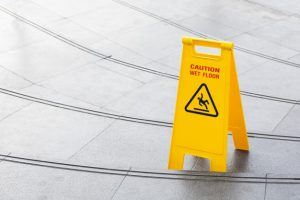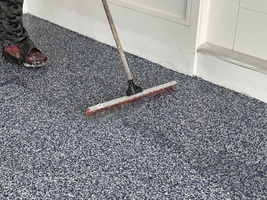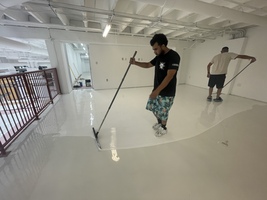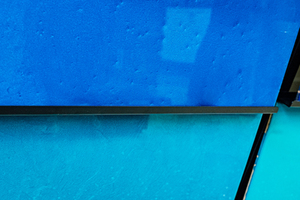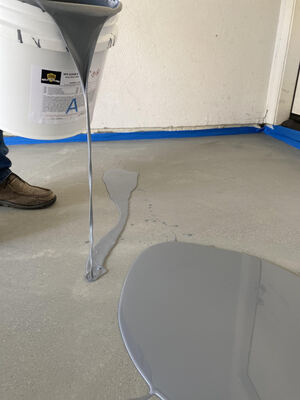
If you are interested in using epoxy as a part of your project, you may want to know more about it. In simple terms, epoxy is made of an epoxide and a curing agent, or hardener. Epoxy is cured epoxy resin. Epoxy resin is epoxy adhesive in its liquid form. For any epoxy, the resin and the curing agent are the two primary parts to the equation. When the resin and the curing agent react together, the hardening process begins. Epoxy resin is typically made with Bisphenol-A and epichlorohydrin. There are some variations in ingredients for epoxy resin, as some use vegetable oil bases to be more environmentally friendly.
The components of epoxy can get a little more intricate, as there are so many different kinds of epoxies. Some include additives or items to be spread between layers.
Temperature also plays an important role in epoxy curing speed. Heat accelerates the curing process, whereas cold will slow down the curing process. However, because epoxy resins become less effective after warming to room temperature, it’s important to store the epoxy in a colder temperature.
Where is Epoxy used?
Epoxy resins were born out of industrial needs to create plastics and increase the strength of products like paint, sealants, and other types of coatings. It has been used in industries like manufacturing, aircraft construction, building construction, molding, casting, and metal coating. It has gradually caught on with consumers for use around the home for a variety of reasons, with the adhesive capabilities being the first to catch the buyer’s attention.
The clear nature of hardened epoxy resin has opened up new avenues for the use of this product. The addition of swirls of color, metal flakes, plastic flakes, glitter powder, and other materials yields interesting results for the artistically inclined. It is used to make customized tables, countertops, art deco items, and frame items around mirrors and pictures. The ability to create one-of-a-kind home or office design pieces is almost limitless. It’s only reined in by the level of creativity of the designer.
How does Epoxy work?
Epoxy resin, in and of itself, is not useful for much. It’s when the epoxy resin is added with a hardener that the magic happens. Epoxy turns to a thermoset plastic when hardeners are added. The product is easy to add to a variety of surfaces and hardens relatively fast. The consistency and clarity of epoxy when dry and without color additives is clear. It’s become a favorable medium to add colors and other particulates to create a customized look for coatings and surface design art.
Fiberglass and other additives can create a whole new chemical that is a glass epoxy resin. The use of epoxy adhesives in sensitive electronics can be used to coat wires and metal surfaces without causing unnecessary disturbance to the electrical activity. It can easily help guard surfaces from corrosion and lighter amounts of heat damage.
What is Epoxy Used for in Construction?
The construction industry deals with epoxy and epoxy additive materials on a regular basis. One of the more critical advancements made for the construction trade is a type of adhesive that sticks to virtually any surface. It can be used to adhere materials to glass, metals, plastic, wood, and concrete. It’s considered one of the strongest available structural adhesives on the market.
Epoxy is also used as an additive to products like paint, sealants, and flooring. Engineered wood is a good example of the benefits of adding epoxy adhesives to wood shavings to create a durable wood floor product. Epoxy paints that are water-based are easier to clean up after use and last longer. Epoxy additive sealants that cover natural stone and tile create a tough surface that protects the surface from damage.
Is Epoxy Strong?
Beyond the super-adhesive properties of the epoxy resin, the ability to harden to a tough substance that is highly resistant to damage from heat and chemicals make it a popular product for many projects. Once the epoxy resin is mixed with the designated chemical hardener, the internal temperature increases, and the mixture begins to form a hardened product. It derives the name “thermosetting resin” from this chemical reaction.
Temperatures of just under 400 degrees Fahrenheit have to be met before some types of epoxy resins harden. Failure to completely mix the resin properly can result in soft spots after hardening. Accumulated air bubbles can also affect the end results negatively. Air bubbles can be released from the resin by using a hair dryer before it hardens or popping them with a sharp, pointed instrument. Epoxy can weaken with UV exposure. Any outdoor surface uses should be coated with polyurethane to create a barrier against UV rays.

